7 Steps to a Kitchen Garden in a Small Apartment
Did you always want to have your own veggie garden but just didn't know where to start? The steps below make it all easy
Ansoo Gupta
27 August 2021
Houzz India Contributor. Urban Farmer. Avid Traveler. Design Admirer, Planet Lover, Marketer. Order Changes.
Houzz India Contributor. Urban Farmer. Avid Traveler. Design Admirer, Planet Lover,... More
If you live in a big city, chances are that your house is smaller than what you would like and you don’t have a front lawn or a backyard for a kitchen garden of your own. The good news is that you don’t need a lot of space to grow your own herbs and veggies. The other good news is that growing your own food can be extremely therapeutic. And of course, you are assured of a supply of chemical free, pesticide free, yummy vegetables along the way.
If you start right and start small, that day is not very far when you will be relishing paranthas made with your homegrown methi (fenugreek), or having fresh spring onions in your morning omelette. Here are the basic steps to becoming a successful small-apartment-kitchen-gardener.
If you start right and start small, that day is not very far when you will be relishing paranthas made with your homegrown methi (fenugreek), or having fresh spring onions in your morning omelette. Here are the basic steps to becoming a successful small-apartment-kitchen-gardener.
Step 1: Assess the sunlight
The most important ingredient for growing edible plants is sunlight. Each plant is a mini factory that converts solar energy into nutrition for us through its leaves and fruits. Study the sunlight in your house. Observe which room or wall gets the maximum and how it moves from morning till the sun sets. Your kitchen garden needn’t necessarily be in the kitchen. It can be out in the small balcony or on a window grill or even in the living room. Sometimes it’s the wall that stays sunlit for a long time. In such cases, consider a vertical herb garden.
REMEMBER that the spot best suited for growing veggies is the one that gets sunlight for the longest duration.
The most important ingredient for growing edible plants is sunlight. Each plant is a mini factory that converts solar energy into nutrition for us through its leaves and fruits. Study the sunlight in your house. Observe which room or wall gets the maximum and how it moves from morning till the sun sets. Your kitchen garden needn’t necessarily be in the kitchen. It can be out in the small balcony or on a window grill or even in the living room. Sometimes it’s the wall that stays sunlit for a long time. In such cases, consider a vertical herb garden.
REMEMBER that the spot best suited for growing veggies is the one that gets sunlight for the longest duration.
Step 2: Choose your pots
The great thing about growing vegetables is that it is not just about the plants, it is also about the instant accent that can be infused to the spot you choose. They can become the centre of attention and spark many a conversations. You can grow edible plants in almost any container. You could use old bottles and tetra packs or you can buy pretty-looking metallic, ceramic or wooden pots. Choose as per your interest and most importantly as per the space that you have chosen to start your kitchen garden in. You can get pots to mount on walls or to hang as window boxes.
If you have a terrace or a balcony, you can try square foot gardening in square wooden boxes. Your imagination will go a long way in making your garden interesting.
REMEMBER to ensure that you do not sow too many seeds in one pot. Start with only a few. You’ll be surprised how big a tiny seed can become once it starts growing.
The great thing about growing vegetables is that it is not just about the plants, it is also about the instant accent that can be infused to the spot you choose. They can become the centre of attention and spark many a conversations. You can grow edible plants in almost any container. You could use old bottles and tetra packs or you can buy pretty-looking metallic, ceramic or wooden pots. Choose as per your interest and most importantly as per the space that you have chosen to start your kitchen garden in. You can get pots to mount on walls or to hang as window boxes.
If you have a terrace or a balcony, you can try square foot gardening in square wooden boxes. Your imagination will go a long way in making your garden interesting.
REMEMBER to ensure that you do not sow too many seeds in one pot. Start with only a few. You’ll be surprised how big a tiny seed can become once it starts growing.
Step 3: Carefully choose what to grow
The sun should be your guide when it comes to choosing what you grow. Herbs need just 2 to 4 hours of direct sunlight and vegetables need at least 4 to 6 hours of the good stuff. Keep that in mind coupled with your personal preference.
Perhaps you’d like fresh mint to make your mojitos, or Italian basil for your monthly supply of fresh pesto? Or perhaps beans, ladyfinger, brinjal and tomato for sambar and the occasional soup? Methi, karela (bitter gourd), curry patta (murraya koenigii) and chillies are all very easy to grow too. Lettuce and spinach can provide steady stream of salad greens. For skincare and medicinal purposes, Aloe Vera, tulsi (holy basil), panfuti (bryophyllum) are great for kitchen gardens and every house should have these plants handy. Lemongrass and shankhpushpi (morning glory) will be great for your refreshing cups of tea.
Choose what you would like to grow but stick to just one or two items to begin with.
Have a bigger garden and don’t know what to do with it? Find a landscape designer to help design your outdoor green space
The sun should be your guide when it comes to choosing what you grow. Herbs need just 2 to 4 hours of direct sunlight and vegetables need at least 4 to 6 hours of the good stuff. Keep that in mind coupled with your personal preference.
Perhaps you’d like fresh mint to make your mojitos, or Italian basil for your monthly supply of fresh pesto? Or perhaps beans, ladyfinger, brinjal and tomato for sambar and the occasional soup? Methi, karela (bitter gourd), curry patta (murraya koenigii) and chillies are all very easy to grow too. Lettuce and spinach can provide steady stream of salad greens. For skincare and medicinal purposes, Aloe Vera, tulsi (holy basil), panfuti (bryophyllum) are great for kitchen gardens and every house should have these plants handy. Lemongrass and shankhpushpi (morning glory) will be great for your refreshing cups of tea.
Choose what you would like to grow but stick to just one or two items to begin with.
Have a bigger garden and don’t know what to do with it? Find a landscape designer to help design your outdoor green space
Step 4: Get the right soil
Once you have figured out your sunny spots and decided on your pots and plants, then go about finding the right soil. These days, many nurseries are selling ready-made potting mix which is a mixture of soil, compost (organic fertiliser) and cocopeat (coconut husk). You could buy ready bags of that.
However, the best way to source good soil is to ask a gardening enthusiast you know in your neighbourhood. They almost always have spare soil. Make sure the soil is allowing the water to seep through and not holding it in, as too much water can rot the roots. Keep a pack of organic fertiliser handy – which you can sprinkle in the pot to ‘recharge’ the soil every month or so.
REMEMBER not to overwater your plants. More plants die due to overwatering than because of any other reason.
Once you have figured out your sunny spots and decided on your pots and plants, then go about finding the right soil. These days, many nurseries are selling ready-made potting mix which is a mixture of soil, compost (organic fertiliser) and cocopeat (coconut husk). You could buy ready bags of that.
However, the best way to source good soil is to ask a gardening enthusiast you know in your neighbourhood. They almost always have spare soil. Make sure the soil is allowing the water to seep through and not holding it in, as too much water can rot the roots. Keep a pack of organic fertiliser handy – which you can sprinkle in the pot to ‘recharge’ the soil every month or so.
REMEMBER not to overwater your plants. More plants die due to overwatering than because of any other reason.
Step 5: Get seeds and saplings
You have chosen your spot, prepared your containers with potting mix and now you are ready to start growing. The best source of seeds and sapling is again your friendly neighbourhood gardening enthusiasts. It’s not difficult to find them in your building or your lane. Better still, join the gardening groups on Facebook. They love exchanging seeds and you can be assured of quality as well. These groups will become your support system for everything related to gardening.
You could also order seed packs and saplings from online gardening websites. Most city nurseries do not sell seeds but check with your neighbourhood suppliers and you will be able to find the right shops closest to you.
You have chosen your spot, prepared your containers with potting mix and now you are ready to start growing. The best source of seeds and sapling is again your friendly neighbourhood gardening enthusiasts. It’s not difficult to find them in your building or your lane. Better still, join the gardening groups on Facebook. They love exchanging seeds and you can be assured of quality as well. These groups will become your support system for everything related to gardening.
You could also order seed packs and saplings from online gardening websites. Most city nurseries do not sell seeds but check with your neighbourhood suppliers and you will be able to find the right shops closest to you.
Step 6: Watch your food grow
Once you have sown the seeds and saplings, look at your plants daily. Miraculously, they will start sprouting and will become tiny plants one fine day – and before you know it, they will flower and bear nice ripe tomatoes or long, shiny green beans!
REMEMBER to interact with your plant daily and let the wonders of nature overwhelm you. Since it’s a small house, chances are that you will encounter and see your plants everyday. This is very good. You will be able to figure out if the leaves are drooping, if the soil is becoming dry due to lack of water, if there’s an insect attack or any other issue that needs addressing. Small houses come with their own advantages!
The times when you have to go out of town, take a neighbour’s help to either come and water your plants every two days or consider leaving plants at their house for a few days. Share your homegrown oregano and chillies with them from time to time to sweeten the deal.
Once you have sown the seeds and saplings, look at your plants daily. Miraculously, they will start sprouting and will become tiny plants one fine day – and before you know it, they will flower and bear nice ripe tomatoes or long, shiny green beans!
REMEMBER to interact with your plant daily and let the wonders of nature overwhelm you. Since it’s a small house, chances are that you will encounter and see your plants everyday. This is very good. You will be able to figure out if the leaves are drooping, if the soil is becoming dry due to lack of water, if there’s an insect attack or any other issue that needs addressing. Small houses come with their own advantages!
The times when you have to go out of town, take a neighbour’s help to either come and water your plants every two days or consider leaving plants at their house for a few days. Share your homegrown oregano and chillies with them from time to time to sweeten the deal.
Step 7: Enjoy your kitchen garden and keep learning
The more you try to grow food, the more you will learn. Google is your best friend, followed by your local gardening groups.
Once you start growing stuff, you will understand the miracle of nature that you have been missing out on. You will also realise how little we know about our daily food. You might encounter a new challenge everyday but once your tomato plant starts flowering and bearing fruit, you will feel immense joy.
And soon you will become the source of seeds and saplings, helping new kitchen gardeners in your apartment complex and in your neighbourhood. You can also be someone who encourages others to use their small spaces to grow herbs and vegetables as well.
REMEMBER to have fun.
Read more:
How to Grow a Green Thumb
8 Challenges for First-Time Kitchen Gardeners
Tell us:
What tips would you like to share with first-time gardeners? Share in Comments below.
The more you try to grow food, the more you will learn. Google is your best friend, followed by your local gardening groups.
Once you start growing stuff, you will understand the miracle of nature that you have been missing out on. You will also realise how little we know about our daily food. You might encounter a new challenge everyday but once your tomato plant starts flowering and bearing fruit, you will feel immense joy.
And soon you will become the source of seeds and saplings, helping new kitchen gardeners in your apartment complex and in your neighbourhood. You can also be someone who encourages others to use their small spaces to grow herbs and vegetables as well.
REMEMBER to have fun.
Read more:
How to Grow a Green Thumb
8 Challenges for First-Time Kitchen Gardeners
Tell us:
What tips would you like to share with first-time gardeners? Share in Comments below.
Related Stories
Kitchen Guides
24 Alluring Kitchen Colour Ideas & Combinations
Do you want your kitchen to be its own person (so to speak)? Here we look beyond neutrals to beautifully coloured kitchens
Full Story
Kitchen Guides
Genius Layouts & Smart Storage: 27 Super Clever Kitchen Arrangements
Here are 27 inspired kitchen designs on Houzz
Full Story
Kitchen Guides
10 Key Kitchen Dimensions You Need to Know
Here are key kitchen dimensions that will help you design like a pro
Full Story
Indian Homes
Design-Forward Indian Living Rooms, Bedrooms & Kitchens on Houzz
Take cues, ideas and inspiration from this compilation of 50 inspiring Indian spaces
Full Story
Kitchen Guides
6 Must-Have Modular Kitchen Accessories
These accessories for modular kitchens are guaranteed to increase efficiency and storage
Full Story
Photo Books
23 Scandinavian Kitchens That Pack Extra Punch
Blonde timber, white details and pared-back designs are key Scandi kitchen looks
Full Story
Dining Rooms
12 Breakfast Nooks Cool Enough for a Dinner Party
By Susan Redman
Forget eating side-by-side at a breakfast bar or supping at a long dinner table – the cosy kitchen nook is a far more hip way to dine
Full Story
Storage Guides
10 Hardworking Pantries For Your Next Kitchen Project
Who says a functional larder can't be full of style, too? Get inspired by these satisfying storage spaces
Full Story
Kitchen Guides
Have an Open Kitchen That Can Be Closed Off Too
By Jennifer Ott
Get the best of both worlds with a kitchen that can hide or be in plain sight, thanks to doors, curtains and savvy design
Full Story

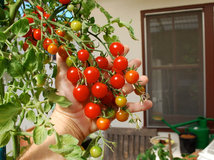
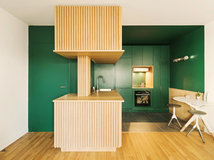
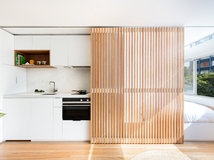

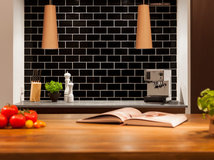










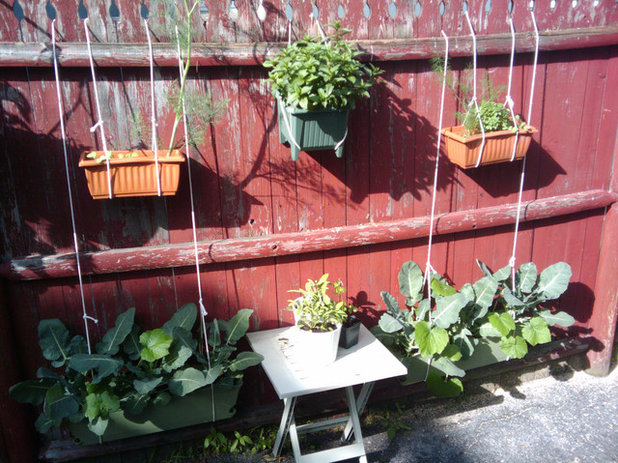
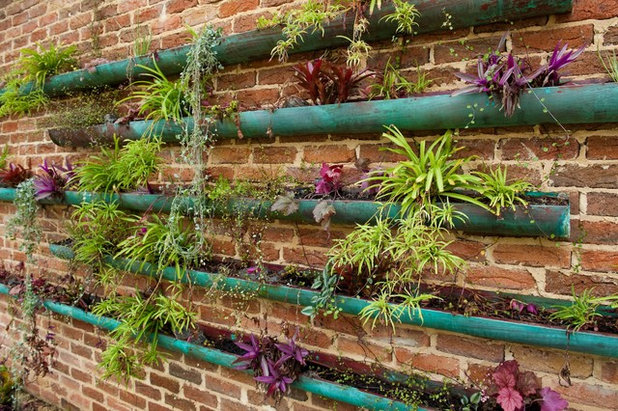
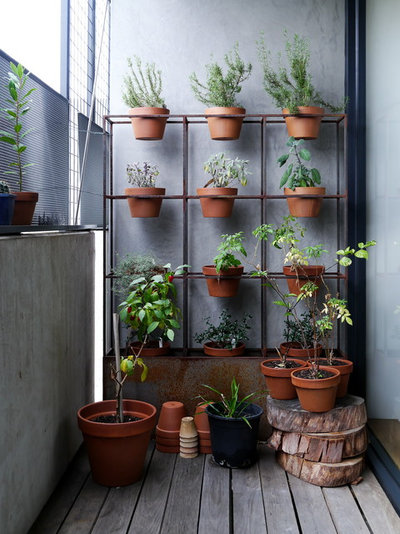
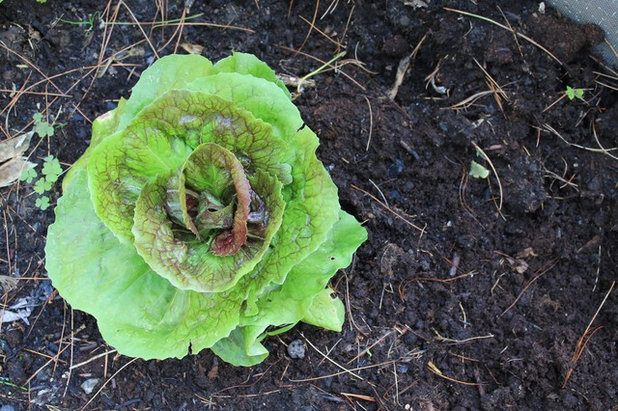
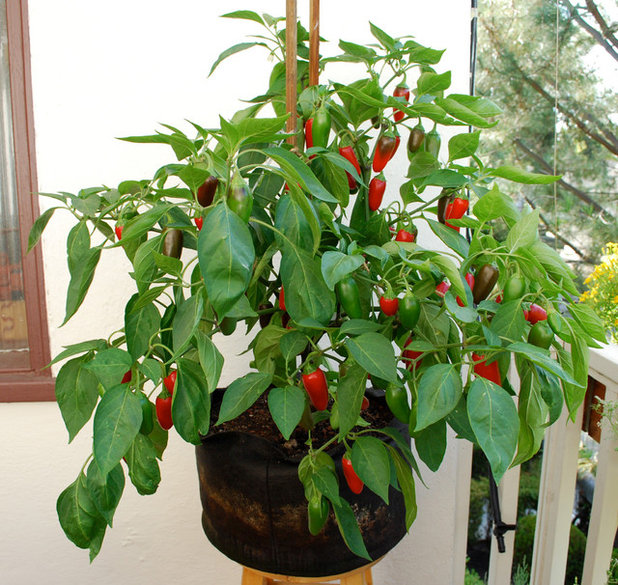
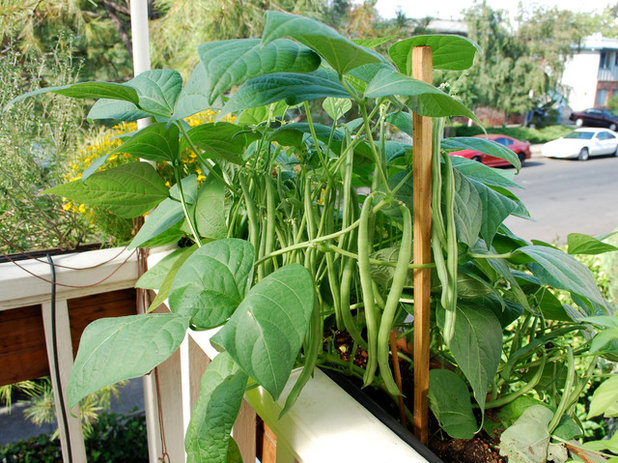
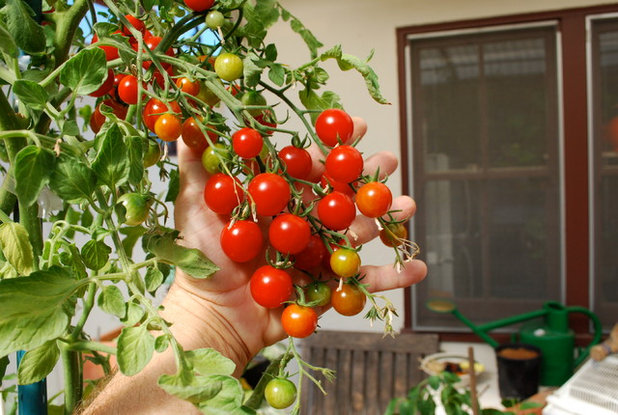


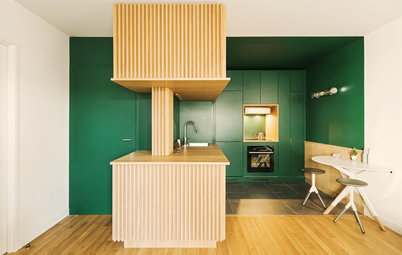
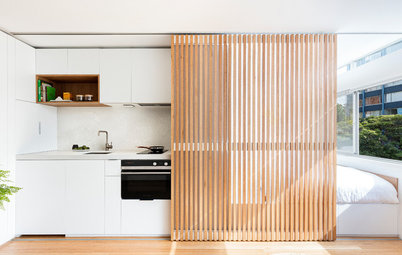
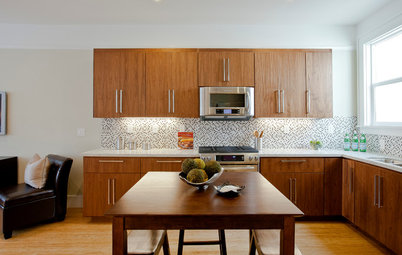
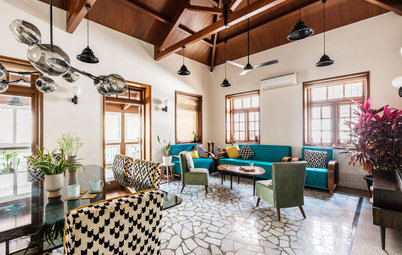

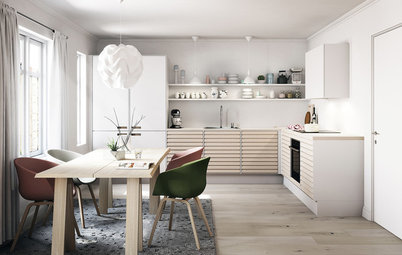
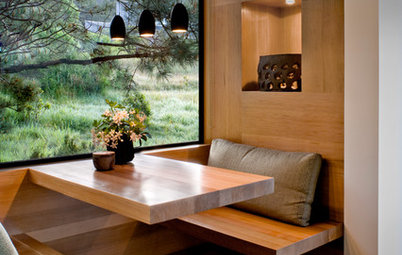
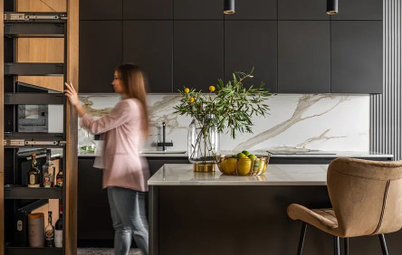

I.am purchasing a 2 BHK for my family. What should I can do to set up an efficient vertical kitchen garden in my balcony.
My flat is South West facing and receives direct sunlight for 4 hours every day.
Thanks,
Ashutosh
Just to make a small correction ( I am a certified horticulturist) we have seeds and SEEDLINGS!
SAPLINGS are Trees grown from cuttings or small shrubs...
Hello @Ashutosh Joshi , firstly, it is very good that you are taking care of this aspect right from the beginning. You should be able to grow most plants nicely. Please take wind etc into account as that dries up the soil. Start with a mix of methi, baingan, okra etc and see how it goes. Vertical garden kits are available easily these days but I suggest, get used to the new microclimate first for 3 months and then set up the vertical garden.